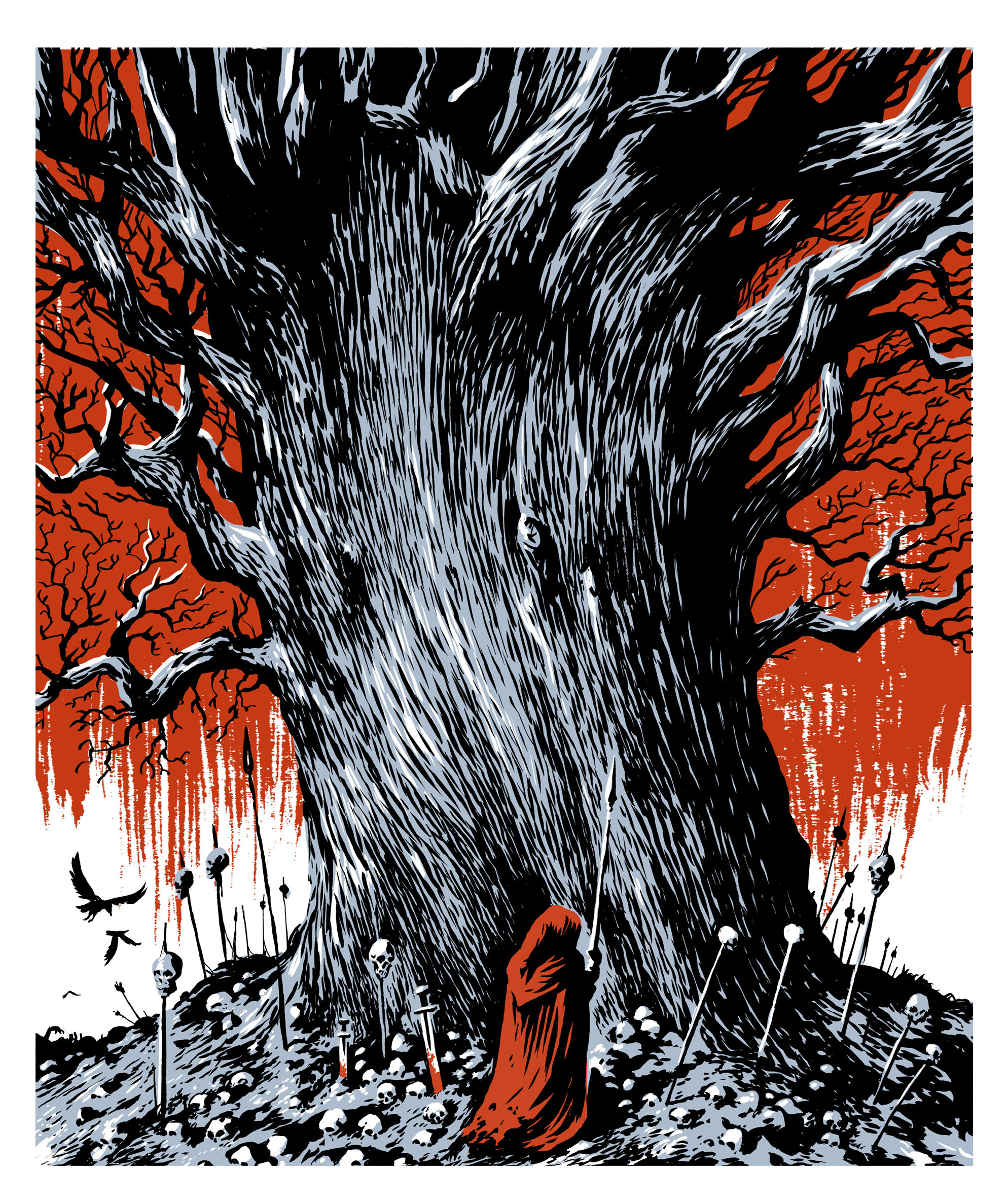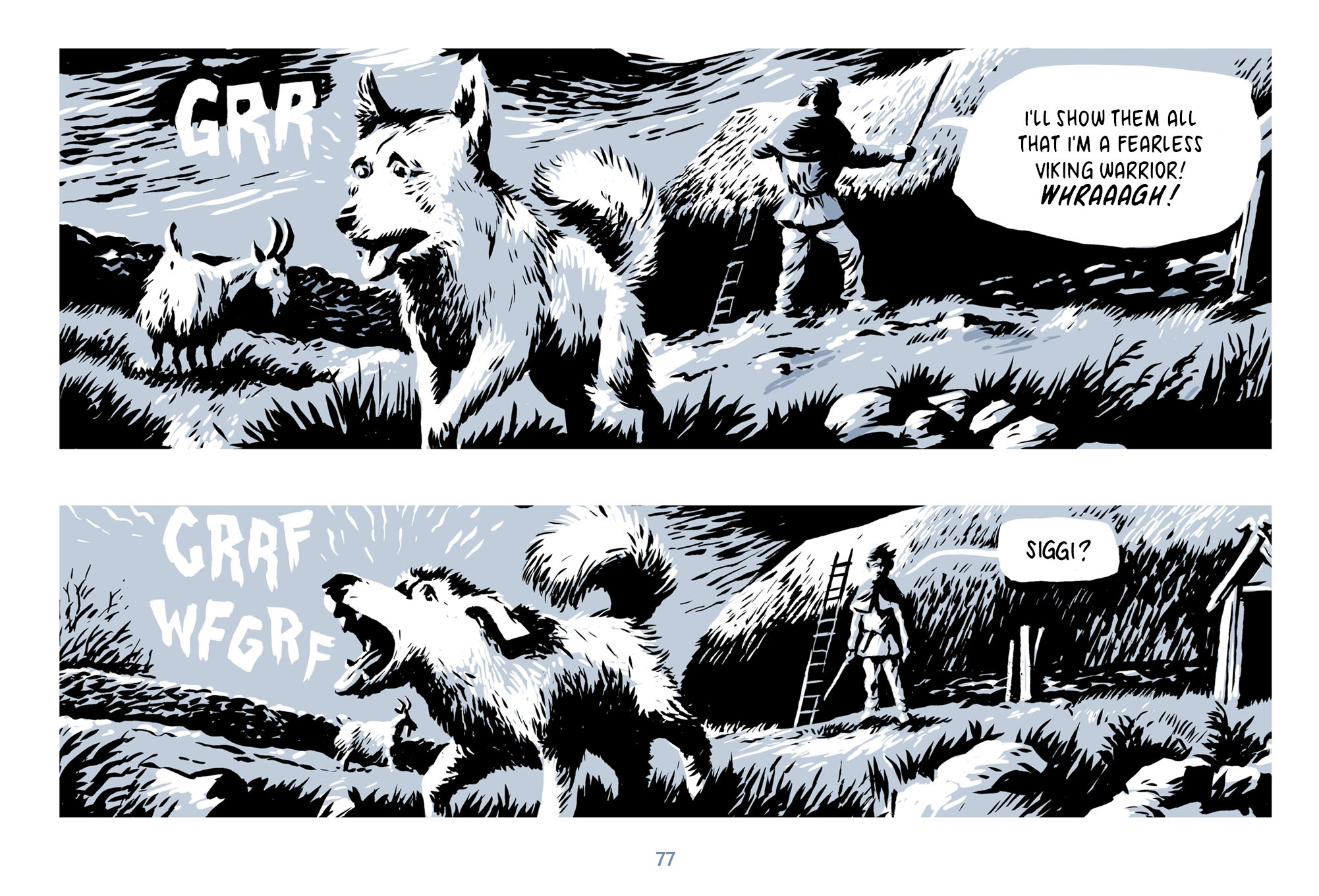Vikings are enjoying a bit of a cultural moment, although they’re now too civilized to really enjoy it. Goodness knows why the escapades of a bunch of marauding white people would appeal to anyone at this point in history, but between the Vikings television and streaming series, Robert Eggers’ electrifying film The Northman, and Valhalla, the latest installment in the popular Assassin’s Creed video game series, it’s a pretty good time to be a sword-wielding Scandinavian. But just try telling that to Hallstein Thordsson, the protagonist of The Exile, the new graphic novel from Dutch cartoonist Erik Kriek. The life of an Icelandic raider isn’t really working out for him.
When we first meet Hallstein, he’s returning to his homeland after seven years of wandering, during which he made a living guarding merchant ships and hiring himself out as a mercenary. Along the way, he picked up a pair of companions (the Finnish archer Ukko and the hulking warrior Bjarki Leifsson, leaving him just one wizard short of a solid D&D adventuring party), but, plagued by traumatic nightmares of his violent past, he’s decided to come back, end his exile, and plead his case to the althing (the local parliament) to be allowed to claim his family’s lands and inheritance.
Alas, things never work out as easily as we plan, and Hallstein soon learns that there are more than a few complications. His family barely remembers him, his rivals–who had already written him off for dead–are planning to take over his land, and while he may be trying to forget the reason for his exile, there are plenty of people back home who remember it all too well. A life of violence is the only one Hallstein has ever known, and trying to leave it behind equips him with no tools with which to transition back into the life of a farmer; while he mocks his friend Bjarki’s intentions to settle down and lead a normal life, he is even less suited for a respectable landowner's vocation.
All of this is told in a lively and well-paced plot, with flashbacks and the passage of time denoted by clever visual markers: events of the recent and distant past are usually conveyed through Hallstein’s dreams, which add blood-red flashes to The Exile’s washes of moody grays and deep blacks; and the story moves in space with striking transitional panels that feature the flight of wild birds across the small island. The story is a matter of transition too, not only for Hallstein and his kin, but for all of Icelandic society, which has existed only as recently as the memory of its oldest residents (Unn the Deep-Minded, grandmother of Hallstein’s rivals and a shamanic seer, was one of the first to settle there). Horses are still a huge status symbol, while wood is more precious than gold. The new presence of Christianity (“the church of the White Christ”) is also starting to transform the Vikings, with its God of forgiveness and peace standing opposite their native deities of warfare and power.
Kriek–who, six years ago, released In the Pines, a comic anthology of American folk murder ballads, through Fantagraphics–works in a classic style of drawing, invoking a lot of the Viking-centered art of a previous generation - specifically, the adventure comics of the 1960s and 1970s. While his style is original, there are links of the DNA of Joe Kubert, Carlsen Verlag’s Valhalla, Hans Kresse’s Eric de Noorman, and even Prince Valiant running through the book. The characters are just distinct enough as types that their roles are clear and consistent throughout the story, and Kriek wisely chooses to give a lot of attention to the environment and the landscape, which helps maintain a distinctive tone.
But what’s surprising about The Exile is how its combination of art and story manages to seem like a throwback to an earlier age of comics without ever coming across as deliberately nostalgic or a try-hard attempt to conjure an existing feeling. There are certainly elements of modern storytelling here, such as in Hallstein’s status as a ‘difficult male’ protagonist, and a lot of the same sensations one might get from a good episode of Vikings (lots of blood and fire and clanging of steel swords). The moral shading is considerably darker than its comic antecedents, right down to the circular nature of its sins-of-the-father thematic elements.
The overall experience of reading The Exile, though, especially after finishing, is that of a rip-roaring old adventure story, a true throwback to a previous era of comics narrative. It’s enjoyably unpretentious, with archetypal characters possessing just enough depth to fulfill their functions in the story, and dialogue that rarely strays into modern argot; there are no nods to irony or self-awareness. It tells a story that is tight and efficient despite its sprawl of time and space, and it hits every beat it needs to hit while providing just enough color to keep readers engaged. It retains elements both ancient (the portrayal of Hallstein as a classic tragic hero with a fatal flaw) and modern (the sometimes-lurid sex and violence all tied up in a cinematic script), but you could drop the book into any of the last seven decades and engaged readers would find it rewarding.
The Exile is not high art, nor does it aspire to be. Its message and meaning are all surface, drawn from the folk art of generations gone by. But it is no more or less than it needs to be. Its 192 pages begin by drawing the reader immediately in, and end with a conclusion both inevitable and effective. It’s easy to imagine it on a big screen, so effortless are the mechanics of its plot and story, but it never tries to be anything but a comics tale of the old school, and it is the better for it. Like so many of its characters, it faces a changing future with a steadfast determination not to let the old ways slip away.











